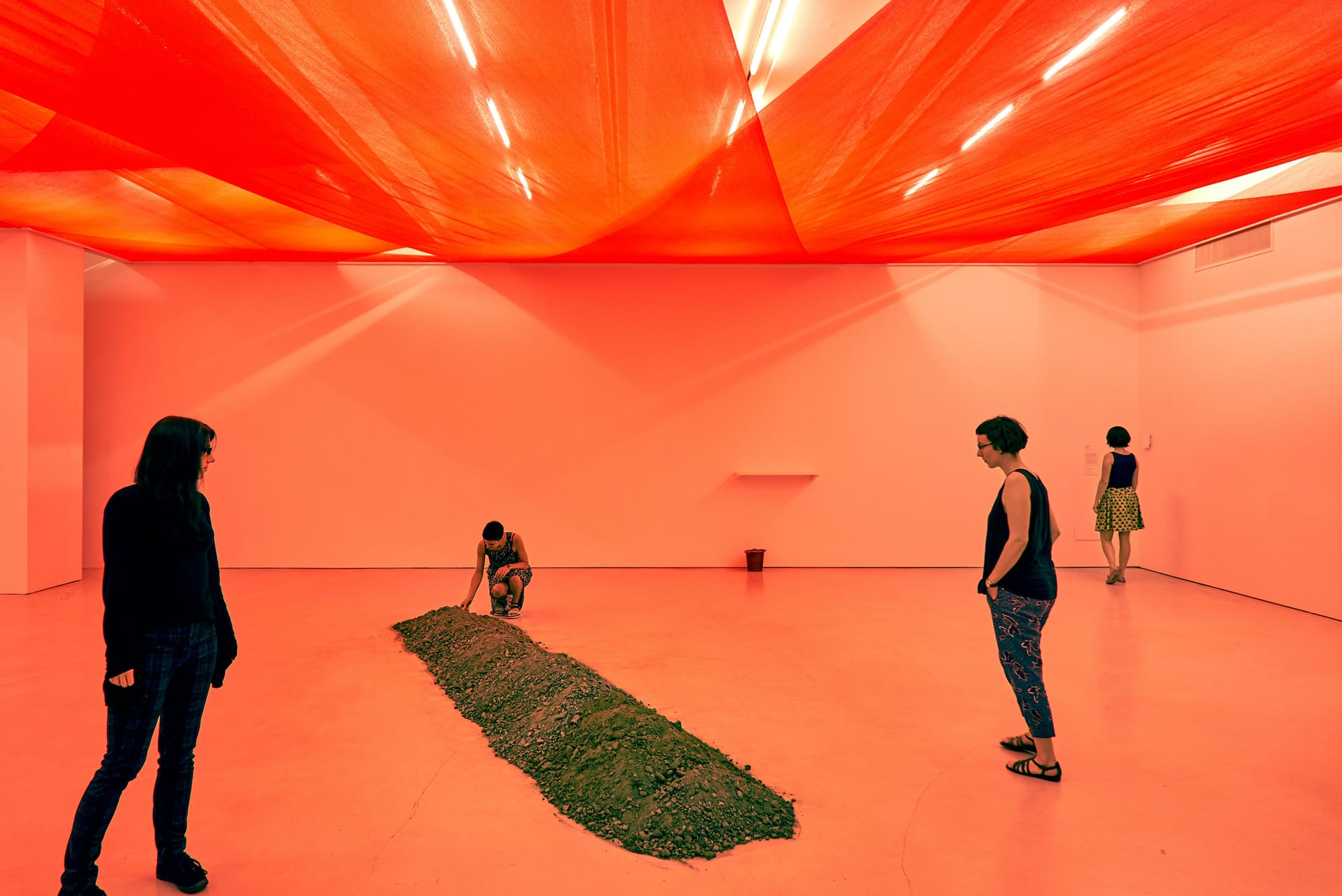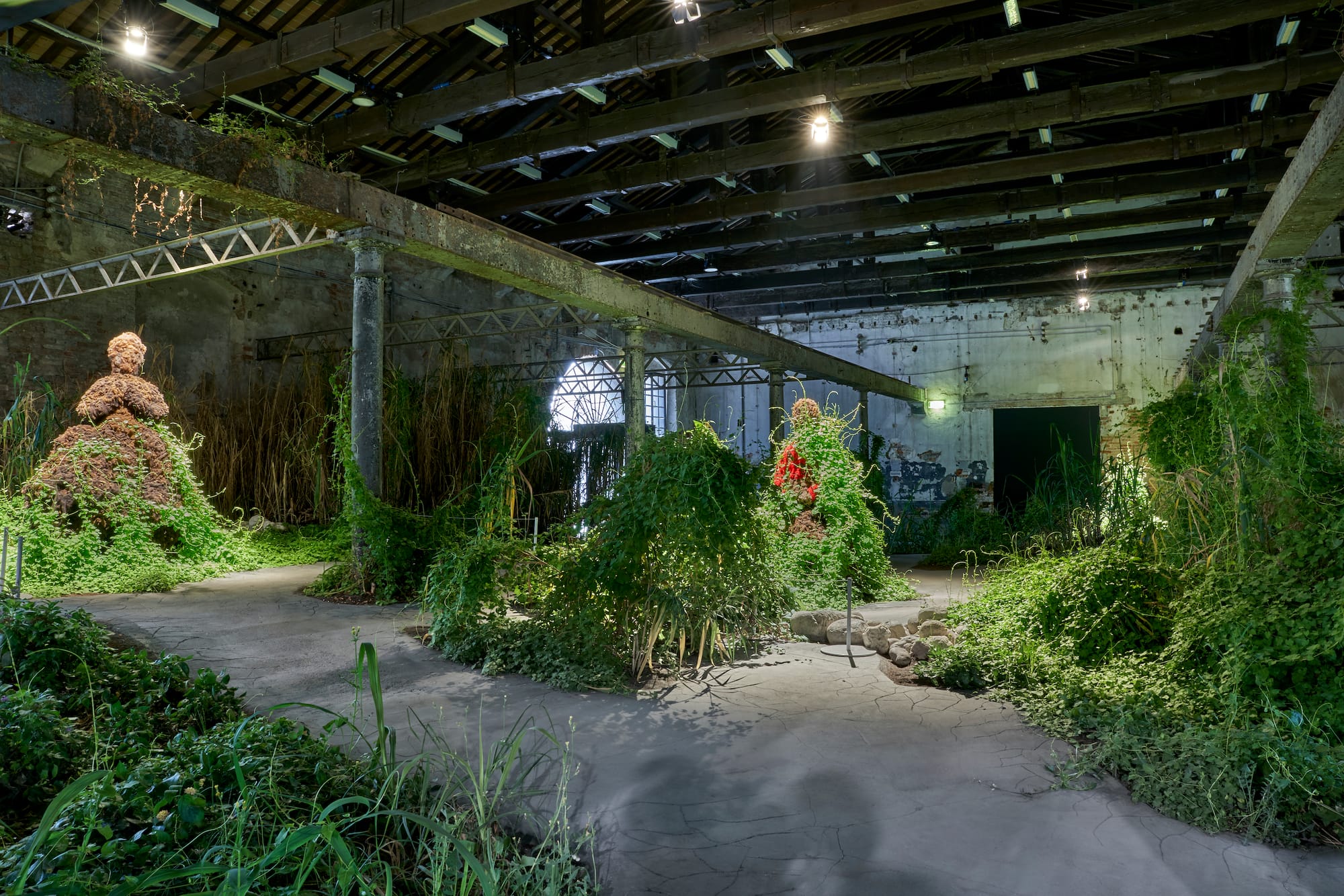Seeking Histories and Futures in Soil
Today’s artists often refrain from imprinting their vision upon the land, instead bringing the soil into the gallery as an archive of nature-human interactions.

Starting in the mid-20th century, humans began to move around more soil than the natural forces of erosion and volcanic activity taken together — we became geological agents, as environmental historian John McNeill has written in Something New Under the Sun (2000). Land art took off at around the same time, with artists like Michael Heizer, Robert Smithson, and Walter De Maria changing the contours of remote places. Decades later we are contending with the consequences of our past actions as earth movers with limited understanding of soils and their histories. But as historian Gabrielle Hecht has argued, saying that “we” are terraforming agents responsible for erosion or ecosystem collapse obscures extractive histories and their unequal distribution among communities. Today’s artists often refrain from imprinting their vision upon the land, instead bringing the soil into the gallery as an archive of nature-human interactions: a cultural record of dispossession and abject ecologies, but also of resilience.
The land artists of the previous century also brought soil into the gallery on occasion — in the case of Walter De Maria’s 1977 "New York Earth Room," recently reopened, no less than 250 cubic yards of earth weighing 280,000 pounds. But whereas the provenance of the soil was not important to De Maria, it is key to many of the artists working today. Kiyan Williams uses soil collected from sites of the African Diaspora: slave castles and sugar plantations in the Caribbean and the American South. Williams’s "Meditation on the Making of America" (2019), currently on view at the Hirshhorn Museum in Washington, DC, is made of earth collected around the home of the artist’s great-great-grandmother in St. Croix, as well as a nearby plantation, where she was an enslaved laborer. The soil is a migrant and the substructure of the nation, intermingled with the lives and remains of the people who have toiled to build it.
Many 20th-century land artists eschewed the gallery to create monumental works in faraway locations that were hard to access. Their remote geographies challenged both the institutional and physical confinement of the museum and the art market’s capacity to render their work “collectible.” One striking departure were Robert Smithson’s Nonsites, bins containing rocks and other elements from specific locations in New Jersey that were displayed in the gallery along with maps and photos of the original site. Smithson’s Nonsites bridged outside space and the gallery through ideas of deep time and geological process rather than human histories. Today’s artists are continuing to reshape the relationship between the gallery’s exterior and interior while rethinking the visitor’s access and, even, participation in their earth works. Kapwani Kiwanga dug up the material for her "Positive-Negative (Morphology)" (2018) installation right outside the Musée d’art de Joliette, in Quebec, where it was displayed.


The museum is located on Nitaskinan territory, homeland of the Atikamekw First Nation, who are still negotiating their land claim with the governments of Quebec and Canada. Kiwanga removed soil in front of the museum and placed it in the gallery to highlight the colonial legacies that still shape relationships to the land. Unlike Claes Oldenburg, who dug a hole in Central Park behind the Metropolitan Museum of Art with the help of two grave diggers and then refilled it on the same day to create "Placid Civic Monument" (1967), the soil from Kiwanga’s excavation was “cooked” to eliminate any living organisms and then brought inside. Viewers were nudged out of their placidity by receiving a bucket and a protocol for returning the dirt to its source. Yet the sterilized soil behaves differently once re-embedded in its original location. The artist’s intervention has thus left a scar-like trace on the institutional grounds.
The current prominence of soil was evident in the recent Venice Biennale. In Delcy Morelos’s "Earthly Paradise" (2022), dark and moist soil rose above the ground to surround the viewer. Inspired by Andean and Amazonian cosmologies, the grave-like experience was imbued with the pervasive, intoxicating smell of earth mixed with cassava, cacao, cinnamon, and clove. These are plants that have traveled around the globe, bringing in their wake human migrations and transforming ecosystems; they are also reminders of soil’s capacity to absorb the dead to nourish the living.
Ιn Precious Okoyomon’s "To See the Earth Before the End of the World" (2022), soil in the gallery that supported an ecosystem of kudzu, sugarcane, and swallowtail butterflies was punctuated by sculptures composed of brown wool and blood. The installation restored the ghostly presence of toiling bodies of the past in a landscape of abundance that celebrated the resilience of nonhuman nature.
Today’s artists are rethinking the role of humans as geological agents transforming biota and landscapes. Their works are a reminder that soil is a finite and precious bridge between the animate and inanimate worlds, the foundry of life. In contrast to the monumentality of iconic land art works, these artists often engage in performative and ephemeral practices that invite the audience to participate in gestures of reparation and witnessing. They resist the idea of a dead earth-as-resource, choosing instead to reanimate the soil with past histories and future imaginaries.








